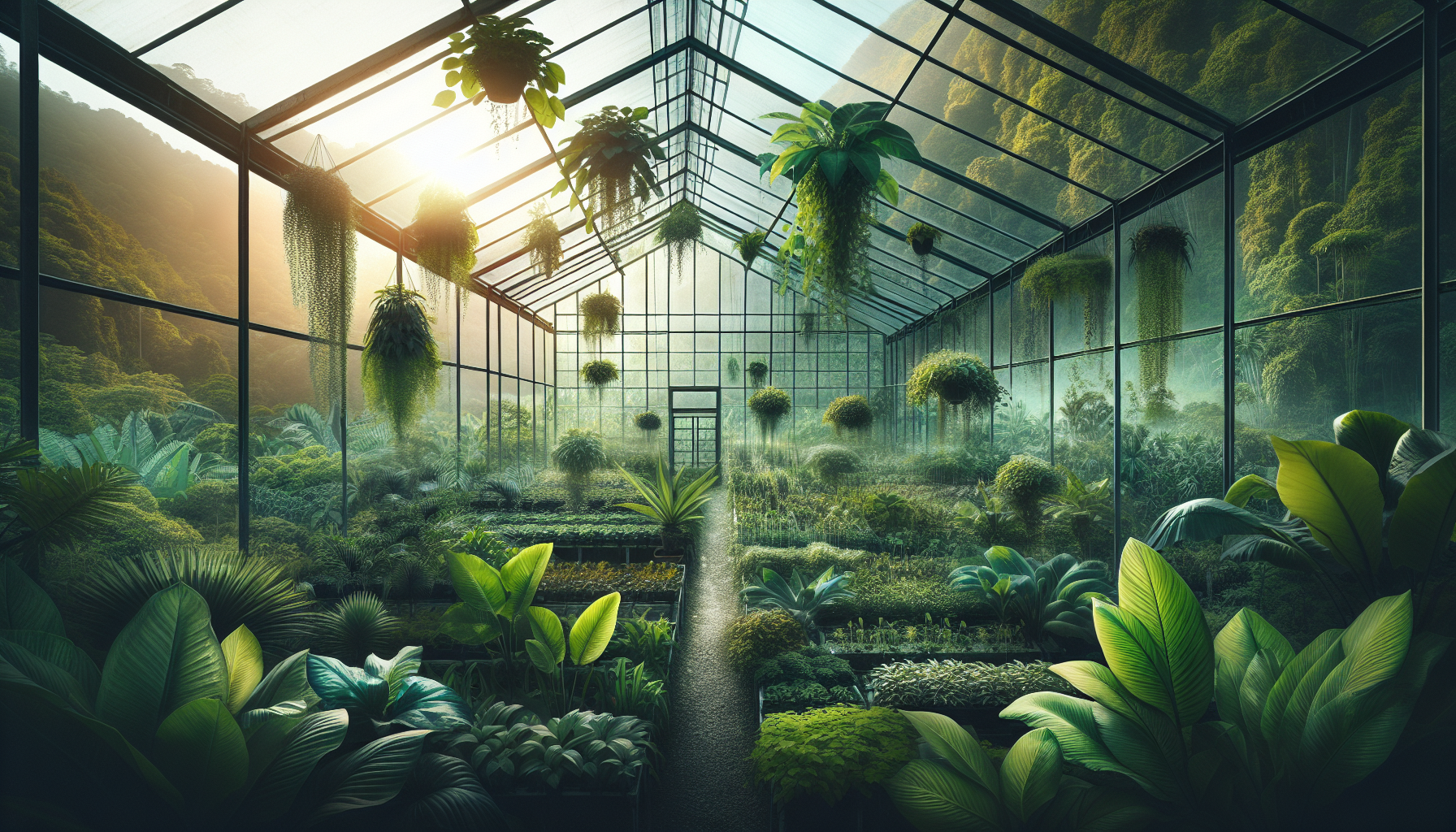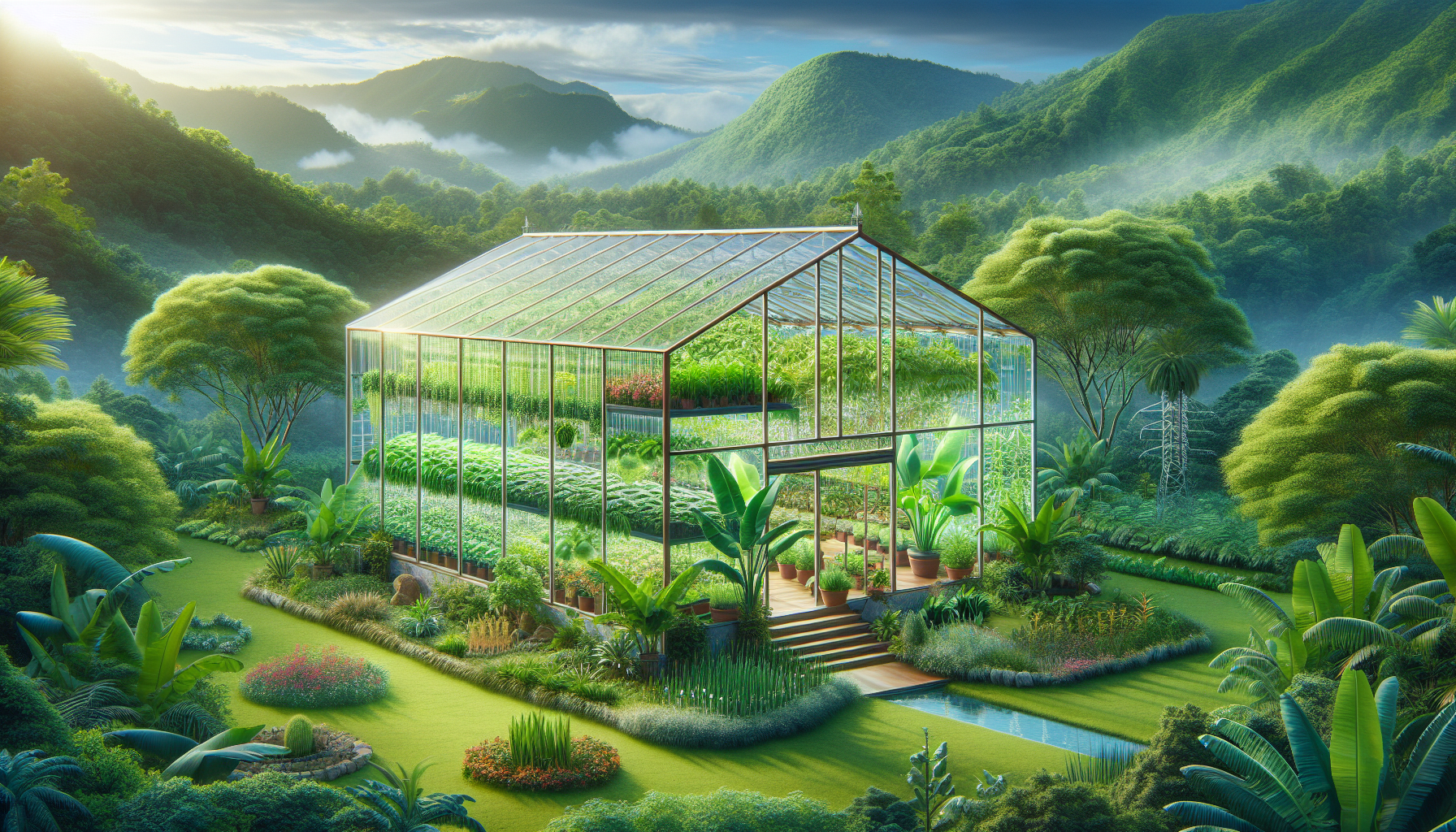
You’re about to embark on an exciting journey exploring greenhouse gardening techniques in the Philippines. This article will whisk you away to the tropical world of Filipino horticulture, revealing innovative approaches to overcoming weather challenges and promoting plant growth. Discover how tropical fruits, vegetables, and native plants thrive within these man-made ecosystems, cleverly designed to mimic the ideal conditions for hardy and robust growth. You’ll get an in-depth understanding of the structures used, the ideal plants to cultivate, and how to effectively manage climate conditions. Let’s embark on this enlightening exploration together!
Understanding Greenhouse Gardening in the Philippines
Greenhouse gardening is a fantastic way to grow your fruits and vegetables in a climate-controlled environment. In the Philippines, owing to the country’s tropical climate, it offers an opportunity to cultivate a wide variety of horticultural crops year-round. Let’s dive in and understand the nuances around this approach to cultivation:
Climate Considerations
The Philippines is characterized by a tropical climate, which is generally warm and humid throughout the year. This type of climate is suitable for a variety of plants, but can also be a challenge for some. The controlled environment in a greenhouse can mitigate some of these challenges by providing a stable atmosphere for plant growth.
Popular Greenhouse Structures
Several types of greenhouses are popular in the Philippines. Structures such as hoop houses, cold frames, and high tunnels are commonly used. Each of these structures offers different advantages, including varying levels of temperature control, protection from wind and rain, and flexibility in size and layout.
Materials Used in Construction
Different materials are used in the construction of Philippine greenhouses, depending on your budget and requirements. Typical materials include metal and wood for framing, and plastic or glass for walls and roofs. Each material has different properties that affect the greenhouse’s durability, insulating ability, and light transmission.
Selecting the Right Location
It’s essential to pick the ideal location for your greenhouse, as it affects your garden’s performance greatly.
Accessibility and Security
Choose a location that is easy to access, especially if you will frequently harvest or tend to your garden. The area should also be secure and free from potential sources of damage like falling branches or roaming animals.
Sunlight and Shade
Your greenhouse should receive optimal sunlight, ideally with a southward orientation. Consider natural sources of shade, such as large trees which may block sunlight.
Water Source Availability
Having a nearby water source is vital for easy watering. This also aids in maintaining a high humidity level, if required.
Wind and Weather Patterns
Keep in mind wind direction and strength. Buffering structures like fences or hedges can protect your greenhouse. Also, consider rainfall patterns, as heavy rains can potentially flood your greenhouse if proper drainage is not in place.

Greenhouse Foundation and Flooring
Another vital aspect is to choose the right foundation and flooring.
Types of Foundations
There are several types of foundations to consider. A trench foundation is common where the frame is laid in a trench and backfilled with soil. A slab foundation includes a concrete floor and is suitable in regions with heavy rains.
Pros and Cons of Different Flooring Materials
Materials like concrete, gravel, or even soil can be used for flooring. Each has its own pros and cons, like ease of maintenance, drainage capabilities, and cost.
Proper Drainage Systems
Ensure to install adequate drainage to prevent water logging. Channels and pipes can be used to continuously drain excess water.
Designing Your Greenhouse
Consider several factors while designing your dream greenhouse.
Size and Layout Planning
The size of your greenhouse depends on the variety and number of crops you plan to cultivate. The layout should allow easy movement and efficient use of space.
Roof and Wall Styles
Roofs can be arch-shaped, sawtooth, or even flat, depending on the materials used and the desired light exposure. Similarly, walls can be vertical or inclined.
Ventilation and Circulation
Ventilation is important to maintain temperature and humidity levels. You can install vents or fans for proper air circulation.
Insulation and Shading Options
Materials like bubble wrap can be used to insulate the greenhouse during colder months. For shading, you could install cloth screens or use paints that reduce sunlight intensity.

Temperature Control Techniques
Maintaining the right temperature within the greenhouse is key for optimal plant growth.
Heating Systems
Install heating systems like furnaces or heaters for colder days. Always keep an eye on the systems to prevent overheating.
Cooling Mechanisms
For cooling, consider fans, vents, or shade screens. Evaporative cooling systems can be quite effective too.
Automated Climate Controllers
To simplify temperature control, automated climate controllers can be used. These devices can maintain desired temperatures at all times.
Irrigation and Water Management
Watering your plants is crucial, but inefficient practices can lead to wastage.
Irrigation System Types
Overhead systems, drip, or soaker hose irrigation are a few options. Each has benefits and considerations, so choose according to your needs.
Water Conservation Practices
Consider rainwater harvesting or using water from a nearby source to save on water usage.
Nutrient Delivery Systems
Through fertigation or hydroponics, nutrients can be delivered directly to the plant roots.
Plant Selection and Cultivation
Choosing the right plants and cultivating them efficiently can increase your yields.
Suitable Plant Varieties
Choose plant varieties that can flourish in a greenhouse environment. Research about the tolerance of different varieties to greenhouse conditions.
Seasonality and Crop Rotation
Consider the season before planting to optimize yields. Introduce crop rotation to avoid depletion of soil nutrients.
Soil Preparation and Potting
Prepare the soil by adding compost and ensuring proper pH levels. Use pots that allow adequate root growth.
Pest Control and Disease Management
Keeping your plants pest-free and healthy boosts productivity.
Common Pests in Philippine Greenhouses
There are several pests to be wary of, such as aphids, whiteflies, or spider mites. Constant monitoring and early mitigation are key.
Organic Vs. Chemical Controls
Use organic or chemical pest controls, depending on the severity of infestation. Always remember, prevention is better than cure.
Disease Prevention Strategies
Keep the greenhouse clean and remove infected plants promptly. Use disease-resistant varieties where possible.
Fertilization and Plant Nutrition
Providing the right nutrition helps in strong, healthy plant growth.
Natural and Synthetic Fertilizers
Use either natural composts or synthetic fertilizers. Each has its own benefits, like slow-release of nutrients or instant availability.
Soil Testing and Nutrient Balancing
Testing the soil periodically helps track nutrient levels. Supplement with required nutrients, keeping in mind the need for balanced nutrition.
Foliar Feeding and Root Drenching
Consider foliar feeding for rapid nutrient uptake. Also, root drenching can provide nutrients directly to the root zone.
Harvesting and Post-Harvest Handling
Finally, efficiently harvesting and handling your produce ensures maximum shelf life and quality.
Harvesting Techniques for Different Crops
Every crop has a specific harvesting time and method. Understand the best practices to ensure high yield and quality.
Storage and Preservation of Produce
Proper storage helps prevent spoilage. Evaluate preservation techniques according to your needs.
Quality Maintenance and Transport
Maintain quality by preventing mechanical damages during handling or transport. Use packaging that provides both ventilation and protection.
With careful planning, you can operate a thriving greenhouse in the Philippines, increasing your yields while fighting against climatic challenges. Happy Gardening!

